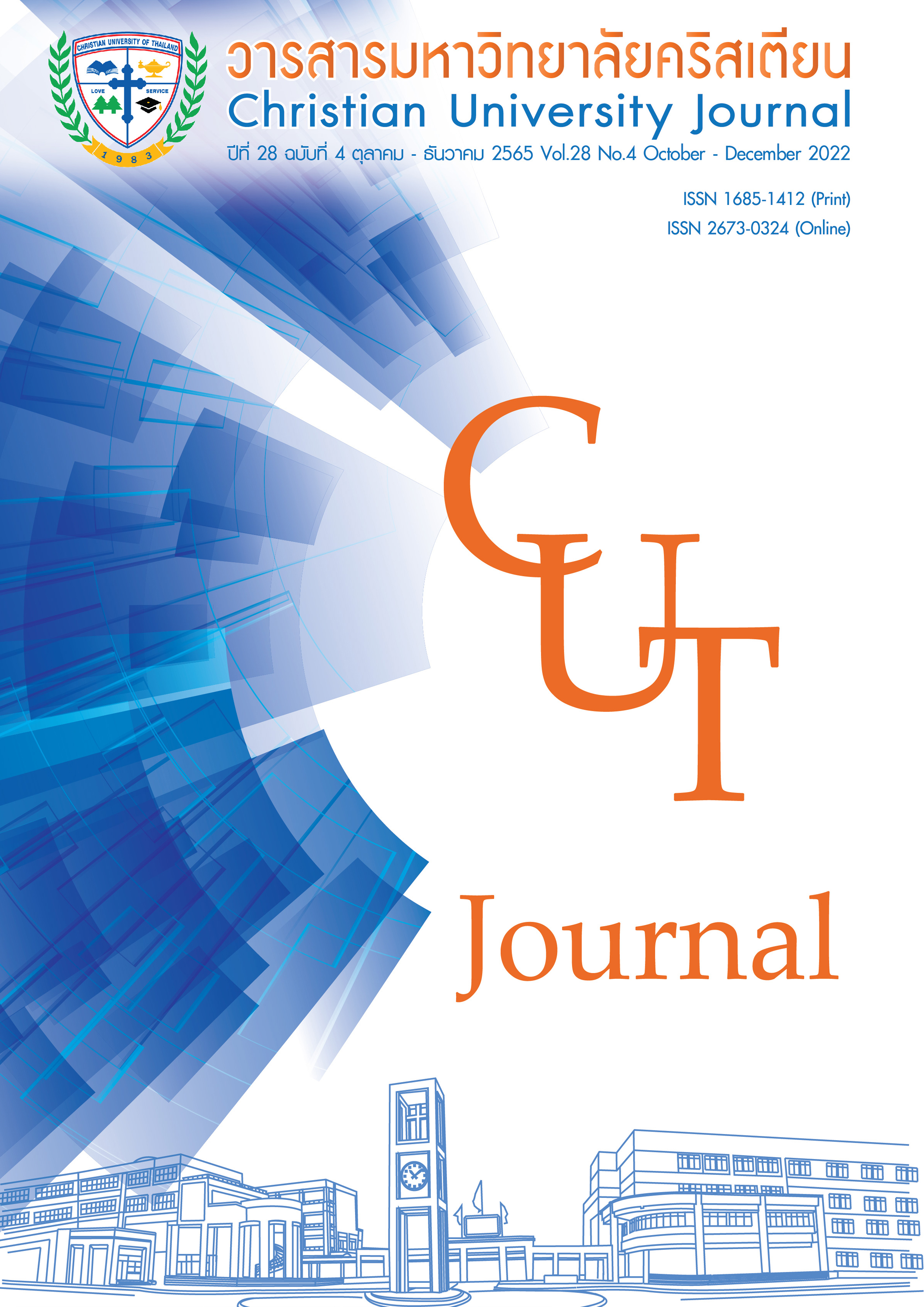แคนนาบินอยด์จากกัญชากับการตายอย่างเป็นระบบของเซลล์มะเร็ง
คำสำคัญ:
เซลล์มะเร็ง, ระบบเอ็นโดแคนนาบินอยด์, ไฟโตแคนนาบินอยด์, อะพอพโทซิสบทคัดย่อ
ปัจจุบันโรคมะเร็งเป็นสาเหตุการเสียชีวิตอันดับหนึ่งของมนุษย์ โรคมะเร็งสามารถเกิดได้กับทุกคนทุกเพศทุกวัยและพบในทุกอวัยวะของร่างกาย การรักษาโรคมะเร็งมีเป้าหมายหลักคือการกำจัดเซลล์มะเร็งออกจากร่างกายให้ได้มากที่สุดเท่าที่เป็นไปได้ด้วยการผ่าตัด รังสีบำบัด และเคมีบำบัด
บทความวิชาการนี้นำเสนอข้อมูลจากรายงานวิจัยต่าง ๆ เกี่ยวกับระบบเอ็นโดแคนนาบินอยด์ในร่างกายและสารประกอบไฟโตแคนนาบินอยด์จากกัญชา ที่ส่งเสริมระบบภูมิคุ้มกันให้มีประสิทธิภาพในการตรวจสอบและบังคับให้เซลล์มะเร็งตายอย่างเป็นระบบ (อะพอพโทซิส) นับเป็นการควบคุมการแบ่งตัวเพิ่มจำนวนเซลล์มะเร็งได้ตั้งแต่ระยะแรกซึ่งอาจเป็นแนวทางการป้องกันรักษาโรคมะเร็งร่วมกับวิธีการรักษาในปัจจุบันให้มีประสิทธิภาพมากขึ้นเพื่อนำไปสู่การลดจำนวนผู้ป่วยและผู้เสียชีวิตจากโรคมะเร็งได้ในอนาคต
เอกสารอ้างอิง
ชยันต์ พิเธียรสุนทร, แม้นมาส ชวลิต และวิเชียร จีรวงศ์ (2544). คำอธิบายตำราโอสถพระนารายณ์ฉบับเฉลิมพระเกียรติ 72 พรรษามหาราชา, 5 ธันวาคม พุทธศักราช 2542. กรุงเทพฯ: อมรินทร์.
ทะกะโฮะ วะตะโย. (2562). มะเร็งหายด้วยอาหาร [Imaaru Gan Ga Kieteku Shokuji] (ชาญ ธนประกอบ, ผู้แปล). (พิมพ์ครั้งที่ 7). กรุงเทพฯ: อินสปายร์.
ปิติ จันทร์วรโชติ. (2560). ชีววิทยาโมเลกุลของเซลล์มะเร็ง. กรุงเทพฯ: จุฬาลงกรณ์มหาวิทยาลัย.
วุฒิ วุฒิธรรมเวช. (2552). ย่อเภสัชกรรมไทยและสรรพคุณสมุนไพร. กรุงเทพมหานคร: ศิลป์สยามบรรจุภัณฑ์และการพิมพ์.
สถาบันวิจัยและพัฒนาพื้นที่สูง (องค์การมหาชน). (2562). กัญชง (เฮมพ์) กับกัญชาต่างกันอย่างไร. สืบค้นจาก https://www.hrdi.or.th/Articles/Detail/37
ศูนย์วิทยาศาสตร์เพื่อการศึกษา. (2564). กัญชง V กัญชา ความเหมือนบนความแตกต่าง. สืบค้นจาก https://sciplanet.org/content/8707
Blasco-Benito, S., Seijo-Vila, M., Caro-Villalobos, M., Tundidor, I., Andradas, C., García-Taboada, … Sánchez, C. (2018). Appraising the "entourage effect": Antitumor action of a pure cannabinoid versus a botanical drug preparation in preclinical models of breast cancer. Biochemical Pharmacology, 157, 285–293. doi.org/10.1016/j.bcp.2018.06.025
Braile, M., Marcella, S., Marone, G., Galdiero, M. R., Varricchi, G., & Loffredo, S. (2021). The Interplay between the Immune and the Endocannabinoid Systems in Cancer. Cells, 10(6), 1282. doi.org/10.3390/cells10061282
Caffarel, M. M., Sarrió, D., Palacios, J., Guzmán, M., & Sánchez, C. (2006). Delta 9-tetrahydrocannabinol inhibits cell cycle progression in human breast cancer cells through Cdc2 regulation. Cancer Research, 66(13), 6615–6621. doi.org/10.1158/0008-5472.CAN-05-4566
Favaloro, B., Allocati, N., Graziano, V., Di Ilio, C., & De Laurenzi, V. (2012). Role of apoptosis in disease. Aging, 4(5), 330–349. doi.org/10.18632/aging.100459
Fonseca, B. M., Correia-da-Silva, G., & Teixeira, N. A. (2018). Cannabinoid-induced cell death in endometrial cancer cells: involvement of TRPV1 receptors in apoptosis. Journal of Physiology and Biochemistry, 74(2), 261–272. doi.org/10.1007/s13105-018-0611-7
Greenhough, A., Patsos, H. A., Williams, A. C., & Paraskeva, C. (2007). The cannabinoid delta(9)-tetrahydrocannabinol inhibits RAS-MAPK and PI3K-AKT survival signalling and induces AD-mediated apoptosis in colorectal cancer cells. International Journal of Cancer, 121(10), 2172–2180. doi.org/10.1002/ijc.22917
Howlett, A. C., & Abood, M. E. (2017). CB1 and CB2 receptor pharmacology. Advances in Pharmacology (San Diego, Calif.), 80, 169–206. doi.org/10.1016/bs.apha.2017.03.007
Leelawat, S., Leelawat, K., Narong, S., & Matangkasombut, O. (2010). The dual effects of delta(9)-tetrahydrocannabinol on cholangiocarcinoma cells: anti-invasion activity at low concentration and apoptosis induction at high concentration. Cancer Investigation, 28(4), 357–363. doi.org/10.3109/07357900903405934
Ligresti, A., Moriello, A. S., Starowicz, K., Matias, I., Pisanti, S., De Petrocellis, L., … Di Marzo, V. (2006). Antitumor activity of plant cannabinoids with emphasis on the effect of cannabidiol on human breast carcinoma. The Journal of Pharmacology and Experimental Therapeutics, 318(3), 1375–1387. doi.org/10.1124/jpet.106.105247
Patsos, H. A., Greenhough, A., Hicks, D. J., Al Kharusi, M., Collard, T. J., Lane, J. D., … Williams, A. C. (2010). The endogenous cannabinoid, anandamide, induces COX-2-dependent cell death in apoptosis-resistant colon cancer cells. International Journal of Oncology, 37(1), 187–193. doi.org/10.3892/ijo_00000666
Shrivastava, A., Kuzontkoski, P. M., Groopman, J. E., & Prasad, A. (2011). Cannabidiol induces programmed cell death in breast cancer cells by coordinating the cross-talk between apoptosis and autophagy. Molecular Cancer Therapeutics, 10(7), 1161–1172. doi.org/ 10.1158/1535-7163.MCT-10-1100
Sung, H., Ferlay, J., Siegel, R; L., & et al. (2021). Global cancer statistics 2020: GLOBOCAN Estimates of incidence and mortality worldwide for 36 cancers in 185 countries. A Cancer Journal for Clinicians, 71(3), 209-249. doi:10.3322/caac.21660
Tomko, A. M., Whynot, E. G., Ellis, L. D., & Dupré, D. J. (2020). Anti-cancer potential of cannabinoids, terpenes, and flavonoids present in cannabis. Cancers, 12(7), 1985. doi.org/10.3390/cancers12071985
Turner, S. E., Williams, C. M., Iversen, L., & Whalley, B. J. (2017). Molecular pharmacology of phytocannabinoids. Progress in the chemistry of organic natural products, 103, 61–101. doi.org/10.1007/978-3-319-45541-9_3
Tutino, V., Caruso, M. G., De Nunzio, V., Lorusso, D., Veronese, N., Gigante, I., … Giannelli, G. (2019). Down-regulation of cannabinoid type 1 (CB1) receptor and its downstream signaling pathways in metastatic colorectal cancer. Cancers, 11(5), 708. doi.org/ 10.3390/cancers11050708
Zhang, X., Qin, Y., Pan, Z., Li, M., Liu, X., Chen, X., … Li, D. (2019). Cannabidiol induces cell cycle arrest and cell apoptosis in human gastric cancer SGC-7901 cells. Biomolecules, 9(8), 302. doi.org/10.3390/biom9080302
ดาวน์โหลด
เผยแพร่แล้ว
ฉบับ
ประเภทบทความ
สัญญาอนุญาต
ลิขสิทธิ์ (c) 2022 มหาวิทยาลัยคริสเตียน

อนุญาตภายใต้เงื่อนไข Creative Commons Attribution-NonCommercial-NoDerivatives 4.0 International License.



